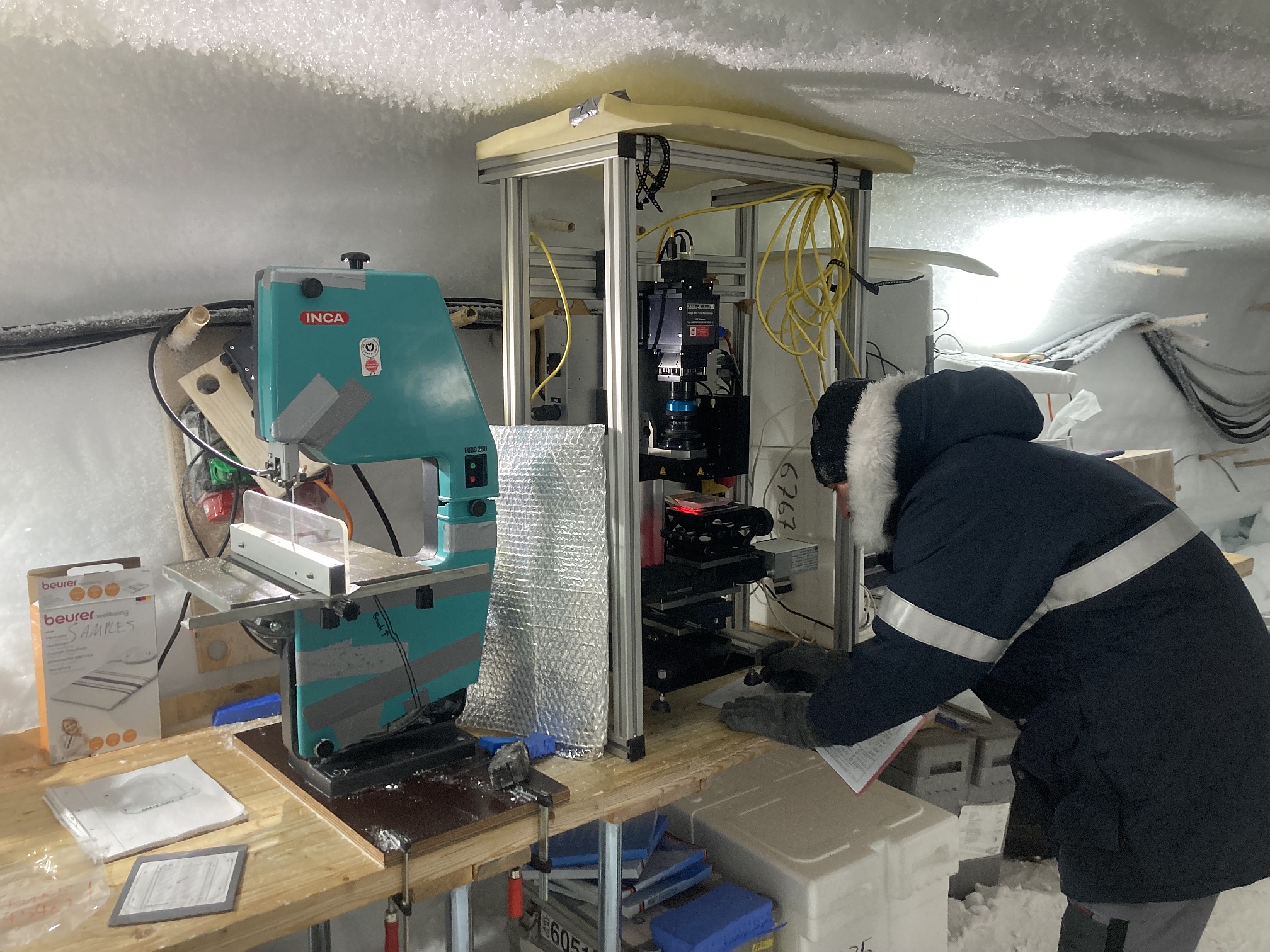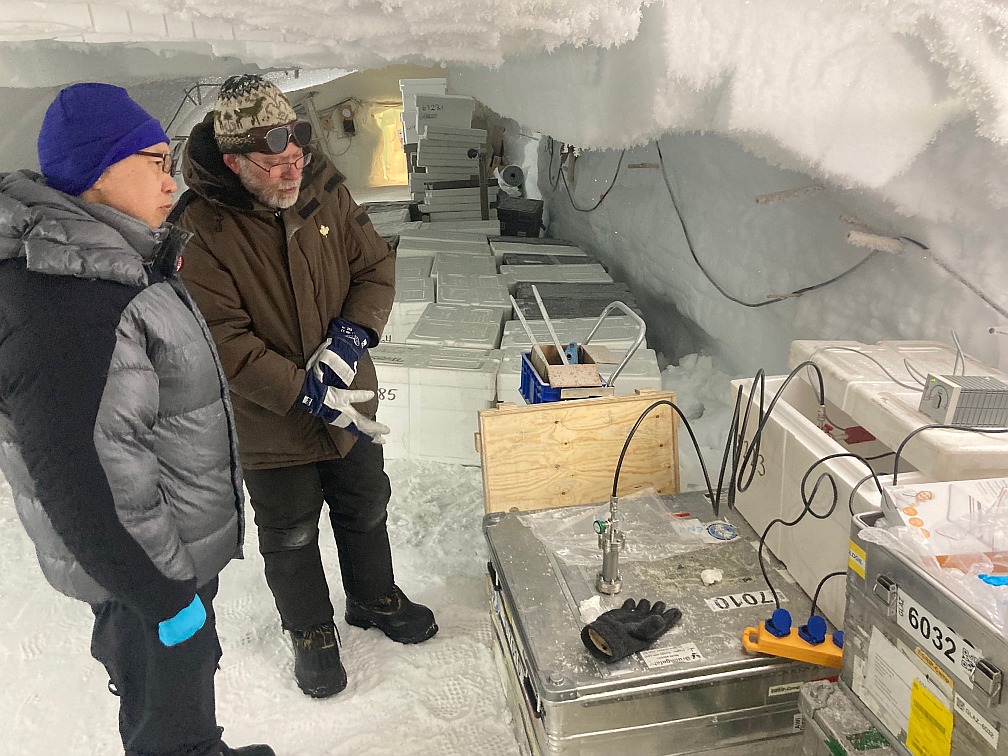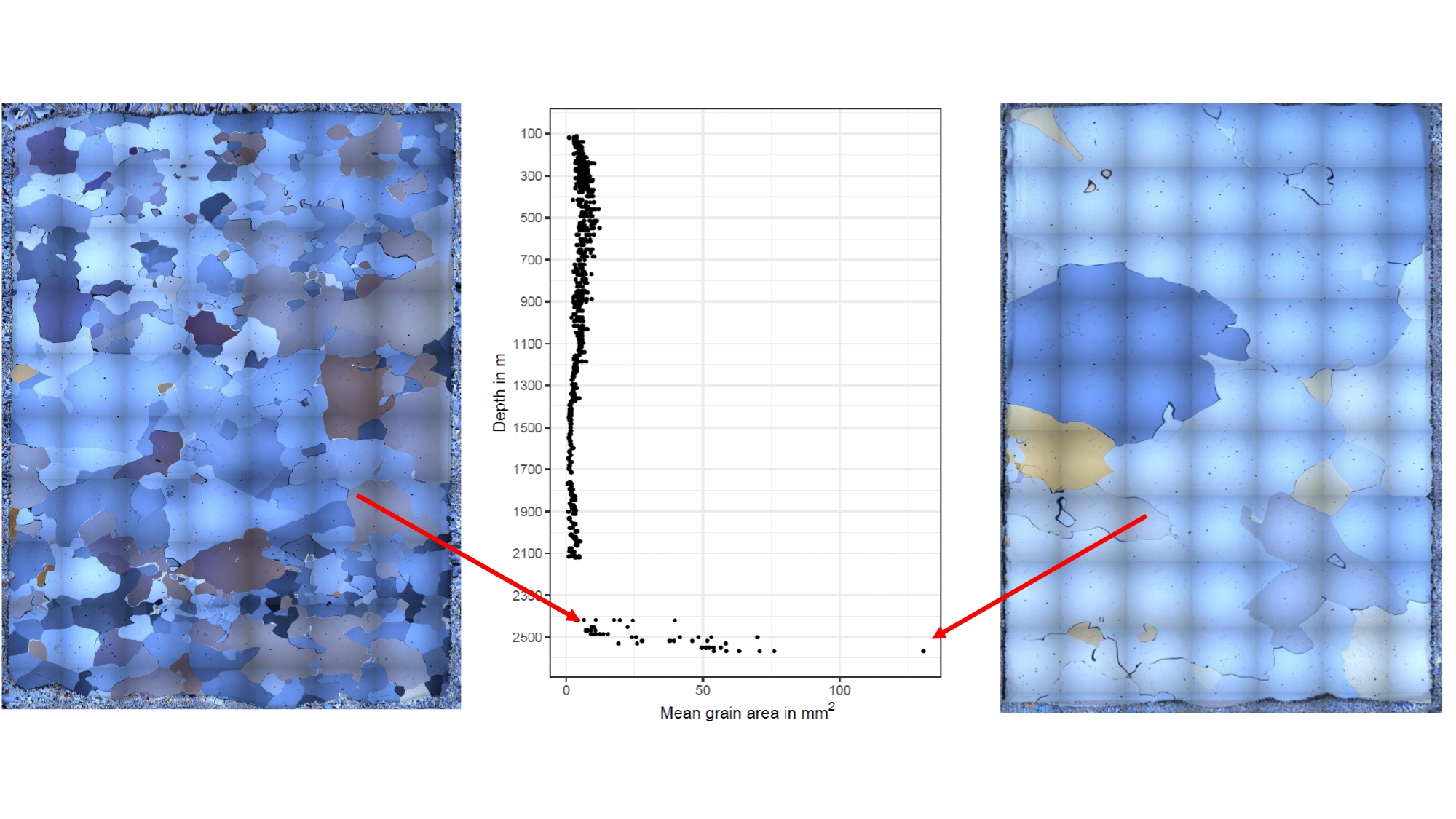
The ‘physical properties’ lab in the science trench where the ice crystal properties are carefully measured by production and analysis of a large number of thin section samples. Nico is hiding in the parka.
June 6, 2023

The ‘physical properties’ lab in the science trench where the ice crystal properties are carefully measured by production and analysis of a large number of thin section samples. Nico is hiding in the parka.
Drilling continues with another four ice cores drilled today. Due to minor technical issues the cores were not all longer than 3m, but still, it’s an impressive production considering we are less than 100m from bedrock in the middle of an ice stream. In the science trench two special samples were sealed into vacuum containers today. The purpose is to investigate how much gas loss there is from samples during transport and storage. For most measurements the gas loss is insignificant, but it matters for specific analyses that involve light gasses, so it is worth investigating and quantifying. Our cook Emil is serving all kinds of delicious meals for us. Today for dinner we had Monkfish tail with wine sauce - a very ugly but also very tasty fish.
A major objective of the EGRIP ice core project is to study the flow of ice in an ice stream. Being at a location where the ice moves more than 50 m per year provides an opportunity to study other aspects of ice dynamics than at the previous Greenland deep drilling sites that were mostly obtained from locations on the ice divide, where there is typically very little horizontal flow. One of the factors that is known to influence ice flow is the ice crystal structure. At EGRIP the ice crystal structure is being monitored closely in terms of ice crystal sizes and crystal orientations that can be studied in ‘thin section’ samples of ice. Throughout most of the ice core the ice crystals have been millimeter sized, with some variation caused mostly by the impurity content of the ice. Here in the deepest part of the ice stream, however, the ice crystal structure changes radically towards much larger ice crystals. This is a well-known phenomenon that is caused by the high in-situ temperatures of the ice. Generally, as the temperature gets above -10°C the ice crystals start to grow rapidly. In the ‘physical properties’ lab in the science trench Nico is now observing centimeter sized ice crystals, similar to what has been observed at other deep drilling sites with basal melting. It is a bit of an open question how well the climatic information in the ice is preserved, when the ice structure changes so dramatically. Further analyses of the ice in the coming years will show.
What we did today:
Weather today: Another beautiful day with blue sky and cold night. We are hoping not all of the good weather is being spend in this period where we have no scheduled flights. Temperatures -25°C to -15°C. Wind 4-10 kt from W.
FL, Anders Svensson

Kenji and Anders in the science trench waiting for the ‘gas loss’ sample container to be pumped free of air. How low can the pressure get when there is an ice sample in the container at -24°C?

The recent development of the ice crystal structure in the ice core is quite significant. On the left-hand side is shown a ‘typical’ thin section sample representative for most of the ice core. Each colored field is an ice crystal and the colors differ due to the different orientations of the crystals. The squared pattern is an artefact of the measurement. On the right-hand side, is shown a sample from some of the deepest measured ice with much larger crystals.